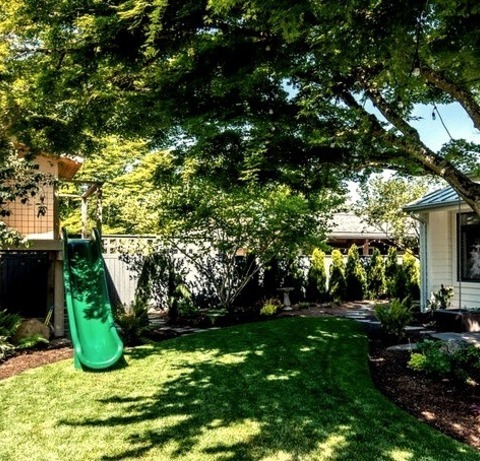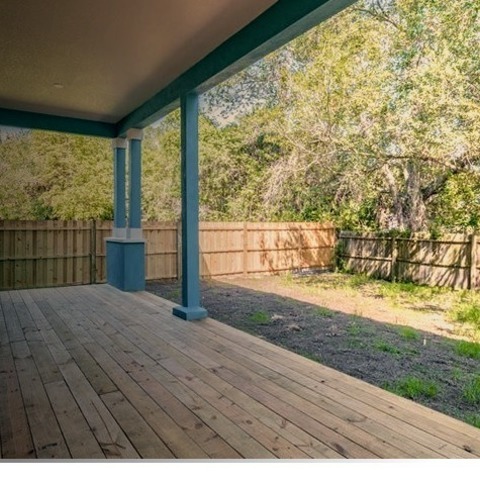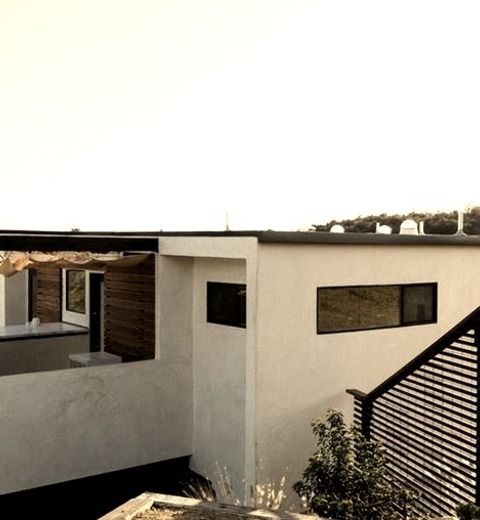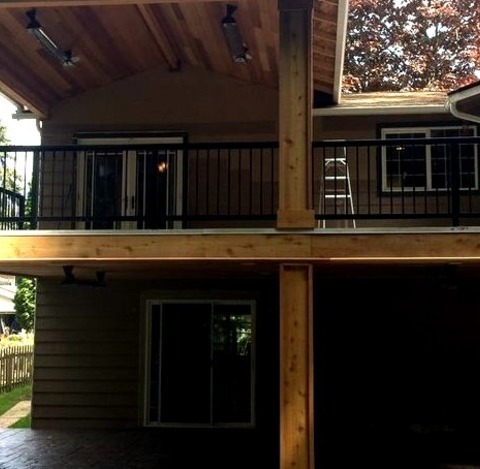#patio roofing ideas
Explore tagged Tumblr posts
Text
How to connect a porch roof to house
How to Connect a Porch Roof to House
A well-designed porch roof can enhance your home’s architectural style while enhancing the value of your property. But attaching a porch roof to your house isn’t always straightforward.
Depending on the type of porch roof, you can choose to connect it to your house by using either a roof tie-in or sidewall connection. Here are the steps you need to take to ensure a strong, safe connection.
Preparing the House Wall
A porch roof not only adds comfort to outdoor living but also protects shoes, furniture, and other items from sun, rain, snow, or wind. It is a great addition to your home and should be well-designed and properly installed for safety and aesthetic appeal.
This process requires a thorough understanding of architectural principles, construction techniques, and regulatory building codes. To make sure that your project is completed safely and according to code, you should hire a professional.
The first step in the process is to prepare the house wall for the connection to the porch roof. This includes marking the locations of the attachment points on the house wall and ensuring that they are aligned with the studs. It is also a good idea to install blocking, which helps provide additional support for the ledger board.
Next, you should measure and cut the ledger board to the desired length. Once you have the right length, you should pre-drill holes for the lag bolts or structural screws. It is important to make sure that the holes are accurate, as any mistakes in this step can cause serious problems later on.
Installing the Ledger Board
After carefully preparing the work area, measuring and marking the attachment points on the house wall, it's time to install the ledger board. The ledger is the horizontal piece that connects to the porch roof, and it's crucial to the strength of your roof structure. Locate a position for the ledger and ensure that it's securely fastened to the house wall with lag screws or structural lag bolts. Be sure to consult local building codes and regulations, or ask a professional for specific guidelines.
Once the ledger is positioned, mark the locations where you will drive the lag screws or bolts through the house wall. Use a level to double-check that the marks are straight and aligned with the positioning of the ledger board.
Next, install the joist hangers that will secure the rafters to the ledger. The number and location of joist hangers will be determined by the design and load requirements of your porch roof. If necessary, install blocking to ensure that the joist hangers are secure. Finally, apply a waterproof sealant to the exterior of the house where the ledger is located.
Installing the Support Beam
A porch roof adds a distinctive architectural style to a home. It also protects the inhabitants from the sun's scorching heat, snow, rain, and strong winds gusts. It is important to build a durable roof that meets the structural demands of the existing house.
The first step in connecting a porch roof to the house is installing the ledger board. This is a wooden board that connects the porch to the house frame. It should be made from a sturdy and weather-resistant material, such as pressure-treated lumber. The board should be securely fastened to the studs of the house wall with lag bolts or structural screws.
After the ledger board is installed, it's time to install the support beam. The support beam should run perpendicular to the ledger board and provide additional stability to the porch roof. To ensure that the support beam is secured correctly, it's best to use joist hangers. Make sure that the joist hangers are set properly, so that they don't interfere with the positioning of the rafters. If necessary, you can add extra support to the structure by constructing diagonal braces.
Installing the Rafters
The rafters are the wooden elements that slope down from the ridge or hip of the roof. They are nailed to the support beam in an alternating pattern. Depending on the design and load requirements of your porch roof, you may need to tie it into an existing house roof. This process is called roof tie-in, and it involves seamlessly integrating new roofing materials with the existing ones.
When constructing your rafters, make sure they are of the right size. You should use a rafter template to ensure they are properly cut. If necessary, you can also install collar ties or ridge beams to add extra strength and stability to your roof structure.
Once the rafters are installed, you can proceed to apply the sheathing. Nail sheets of 1/2 inch plywood or OSB as sheathing to the rafters and check their alignment for a sturdy construction. A drip edge and roofing paper are then installed over the sheathing. Finally, asphalt shingles or another roofing material of your choice is attached to the roof. A fascia board can also be installed on the rafter tails to enclose them and serve as a base for gutters.
Installing the Sill Plate
Adding a porch roofs to your home is a rewarding project that adds value and function to the living space. However, it is important to follow proper construction techniques and materials that prioritize safety and load-bearing capacity. To avoid costly mistakes, it is best to consult a professional or have a contractor help with the process.
The first step is to prepare the house wall by removing any siding, shingles or flashing where the roof will attach. Then, measure and mark the attachment points on the wall. Finally, install the ledger board by fastening it to the wall studs using lag bolts or structural screws.
Once the ledger board is attached, you can begin installing the rafters. When laying out the rafters, it is best to use a roofing design that matches the existing roof of your house for consistency and aesthetics. To make the process go smoother, it is also a good idea to have a set of quality tools and to check that all your materials are in order before starting the job.
Read more - How to connect a porch roof to house
0 notes
Photo

Modern Deck - Roof Extensions
#Deck - large modern backyard deck idea with a roof extension patio furniture#landscape#deck#recessed lighting#patio view#outdoor living spaces#custom spa
4 notes
·
View notes
Photo

Roofing Metal in Portland Photo of the exterior of a large mid-century modern white two-story home with wood clapboards and a gray roof.
0 notes
Photo

Pool Lap Idea for a medium-sized, custom-shaped lap pool in a coastal backyard made of stone.
#backyard patio ideas#pool#outdoor dining#metal roof#unique shaped#white backyard patio#outdoor ceiling fan
0 notes
Photo

Roof Extensions Deck in Tampa Inspiration for a mid-sized contemporary backyard deck remodel with a roof extension
#roof extensions#custom deck design ideas#coastal#blue double column patio#light wood fencing#natural wood deck
0 notes
Photo

Pool Lap in Los Angeles Pool fountain - mid-sized mediterranean backyard concrete paver and rectangular lap pool fountain idea
#mediterranean style patio#mediterranean style pool#potted backayard plants#mediterranean style roof#pool fountain ideas#pool#terracotta pool tile
0 notes
Photo

Deck - Transitional Deck Example of a sizable, transitional backyard deck with an addition to the roof
#roof extensions#deck railing ideas#patio deck design#concrete resurfacing#deck#wrap around deck#deck railing
0 notes
Photo

Rooftop Deck Deck: Idea for a mid-sized, contemporary rooftop deck with a pergola
#deck#custom patio ideas#medium wood railing#custom wood patio#metal railing#modern flat roof#medium wood wall
0 notes
Photo

Contemporary Deck Toronto Deck container garden - large contemporary rooftop deck container garden idea with no cover
0 notes
Photo

Concrete Slab - Patio Inspiration for a sizable contemporary kitchen renovation in the front yard with a concrete patio
#big green egg ideas#contemporary design#vertical siding#black metal siding#black metal roof#patio#custom outdoor cabinets
0 notes
Photo

San Diego Roof Extensions Patio An illustration of a medium-sized traditional backyard brick patio with a fire pit and a roof extension
#wicker patio seating#patio tv#roof extensions#brick patio ideas#patio bench seating#brick patio fireplace#nautical patio
0 notes
Photo

Craftsman Deck in Seattle Ideas for a sizable craftsman backyard deck renovation that includes a roof extension
0 notes
Text
Brick Exterior Dallas

Inspiration for a mid-sized red two-story brick exterior home remodel with a hip roof
#metal patio roofing#entry vine#covered entry#stone veneer ideas#exterior#vine ideas#metal patio roof
0 notes
Photo

New York Traditional Landscape Ideas for a traditional, medium-sized backyard landscape with a stone water fountain.
#grey gable roof#backyard water feature#traditional backyard landscape#backyard landscape ideas#natural stone patio
0 notes
Text
Rooftop Deck in Toronto

Large trendy rooftop deck container garden photo with no cover
#rooftop patio#patio ideas#rooftop patio ideas#modern style#modern wicker patio furniture#roof top patio#contemporary style
1 note
·
View note
Photo

Chicago Stone Ideas for a substantial, enduring renovation of a two-story, stone gable roof
#patio#traditional landscape ideas#arched windows#traditional landscape#gable roof#stone siding#covered patio
0 notes